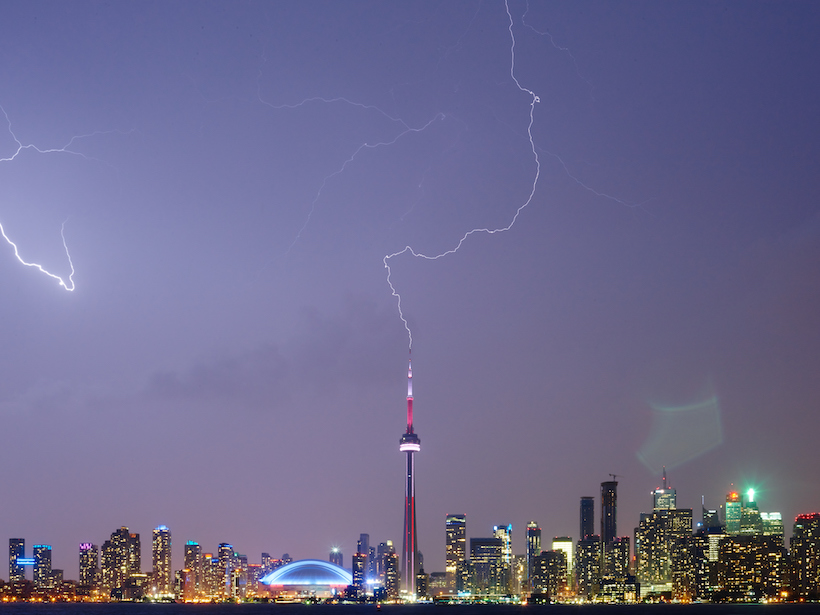Source: Journal of Geophysical Research: Atmospheres
A translation of this article was made by Wiley. 本文由Wiley提供翻译稿
In the chaos of a thunderstorm, upward moving lightning occasionally springs from the tops of tall structures. Scientists don’t fully understand how upward lightning is triggered; it is likely a combination of multiple environmental factors, such as the background electric field and the structure’s height. In a new study, Sunjerga et al. investigate how ambient lightning events near tall structures may trigger upward lightning.
The team created a simplified model of different scenarios that have been observed to occur near a tower before upward lightning. The model was able to explain the mechanism that causes upward lightning to spark from a structure as a result of nearby lightning activity.
According to their simulations, both the relatively slow leader discharge (the precursor paths that lightning will follow) passing above the tower and the much faster return stroke (the bright flash we see as lightning) in the vicinity of the structure can enhance the ambient electric field enough to trigger upward lightning from towers as short as about 30 meters—about 10 stories.
The study confirms the existence of a causal relationship between nearby lightning and upward lightning from towers. Additional research into factors like the local geography, the frequency of each scenario, and the wind speed can help further explain this unusual phenomenon. (Journal of Geophysical Research: Atmospheres, https://doi.org/10.1029/2020JD034043, 2021)
—Elizabeth Thompson, Science Writer
Citation:
Thompson, E. (2021), Upward lightning takes its cue from nearby lightning events, Eos, 102, https://doi.org/10.1029/2021EO156948. Published on 09 April 2021.
Text © 2021. AGU. CC BY-NC-ND 3.0
Except where otherwise noted, images are subject to copyright. Any reuse without express permission from the copyright owner is prohibited.

